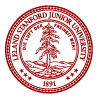Gopal Anumanchipalli (UCB) - Neural computations in Humans for Speech
Date:
Fri, 11/18/2022 - 10:30am - 12:00pm
Location:
CCRMA Seminar Room
Event Type:
Hearing Seminar 
His latest work looks at the correspondence between brain signals and different layers in an unsupervised model of speech. What can DNNs and real cortical networks tell us about how to process speech?
Who: Gopala Anumanchipalli (UCB and UCSF)
What: Dissecting neural computations of the human auditory pathway using deep neural networks for speech
When: Friday November 18th at 10:30AM
Where: CCRMA Seminar Room (top floor, behind the elevator)
Why: We want to understand how speech is processed.
See this paper for more information: https://www.biorxiv.org/content/10.1101/2022.03.14.484195v1
Come to CCRMA and we’ll talk about how you and DNNs process speech.
- Malcolm
Dissecting neural computations of the human auditory pathway using deep neural networks for speech
Prof. Gopala Anumanchipalli (UCB and UCSF)
Abstract:
The human auditory system extracts rich linguistic abstractions from the speech signal. Traditional approaches to understand this complex process have used classical linear feature encoding models, with limited success. Artificial neural networks have recently achieved remarkable speech recognition performance and offer potential alternative computational models of speech processing. We used the speech representations learned by state-of-the-art deep neural network (DNN) models to investigate neural coding across the ascending auditory pathway from the peripheral auditory nerve to auditory speech cortex. We found that representations in hierarchical layers of the DNN correlated well to neural activity throughout the ascending auditory system. Unsupervised speech models achieve the optimal neural correlations among all models evaluated. Deeper DNN layers with context-dependent computations were essential for populations of high order auditory cortex encoding, and the computations were aligned to phonemic and syllabic context structures in speech. Accordingly, DNN models trained on a specific language (English or Mandarin) predicted cortical responses in native speakers of each language. These results reveal convergence between representations learned in DNN models and the biological auditory pathway and provide new approaches to modeling neural coding in the auditory cortex.
Bio: Gopala Anumanchipalli is an Assistant Professor in Electrical Engineering and Computer Sciences at UC Berkeley and in the Dept. of Neurosurgery at UC San Francisco. He directs the Berkeley Speech Group where the research lies at the intersection of Spoken Language Processing, Speech Neuroscience and Machine Learning. His group is developing bio-inspired algorithms for spoken language AI and Brain-Computer Interfaces to restore communication in paralyzed populations.
FREE
Open to the Public

